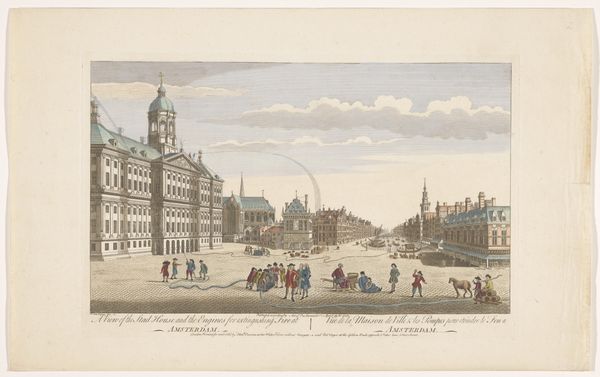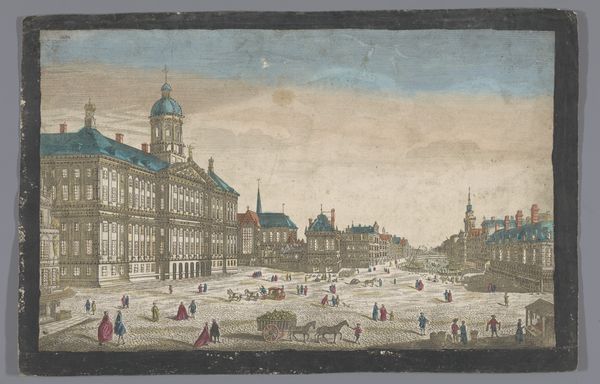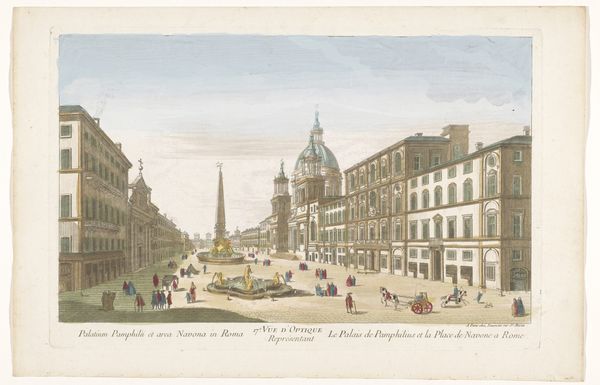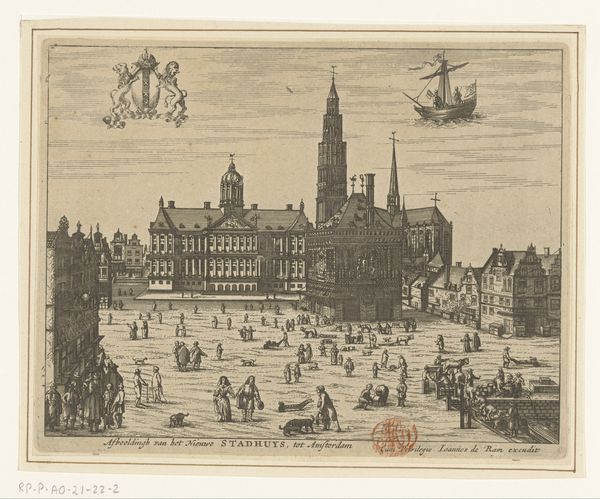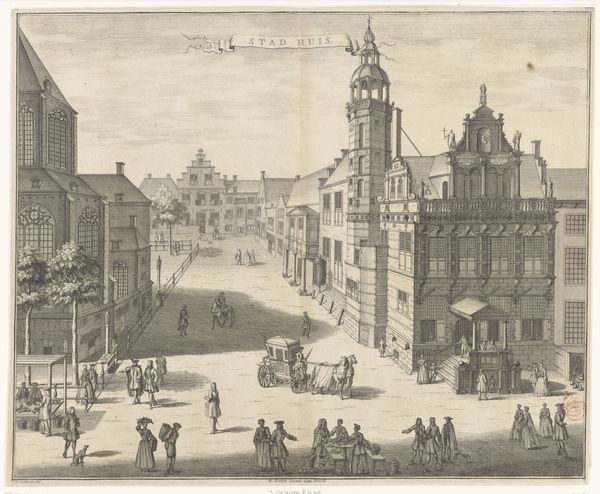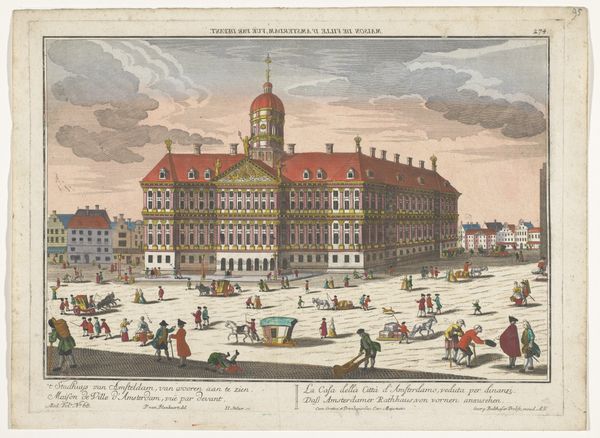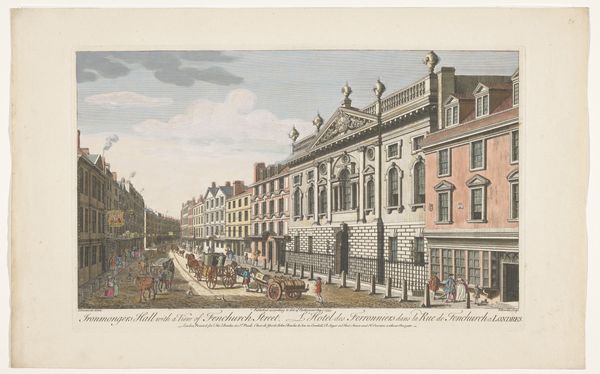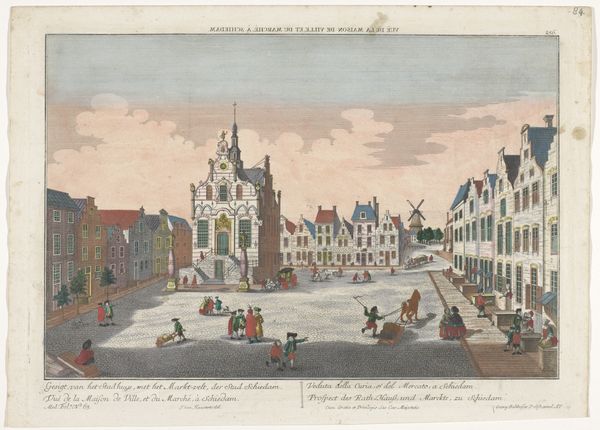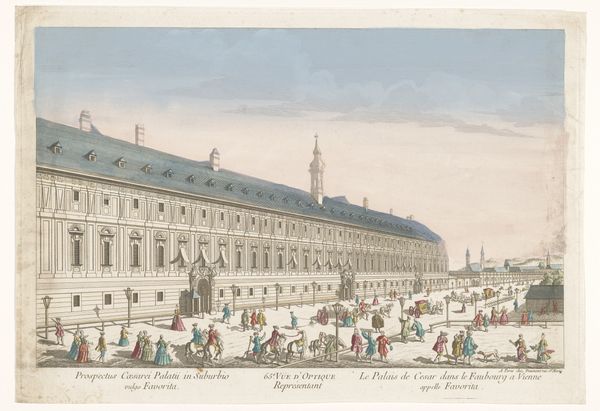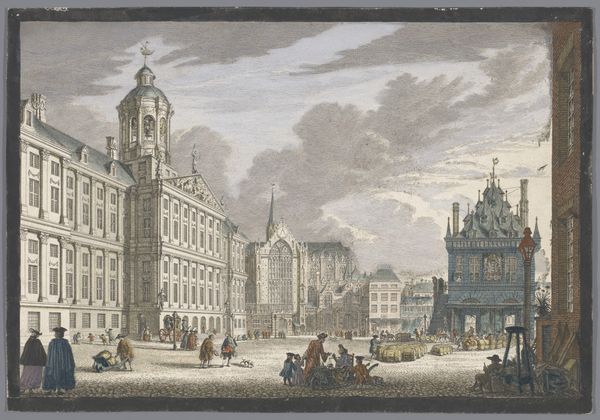
print, engraving
#
baroque
#
dutch-golden-age
# print
#
landscape
#
cityscape
#
engraving
Dimensions: height 285 mm, width 427 mm
Copyright: Rijks Museum: Open Domain
Curator: Here we have "View of the Town Hall and Dam Square in Amsterdam", an engraving from somewhere between 1745 and 1775, by Jean-François Daumont. The Rijksmuseum holds this work, allowing us a glimpse into Amsterdam's past. Editor: Wow, what strikes me first is how airy it feels! There’s this beautiful pale sky taking up nearly half the image, and the figures scattered about the square seem almost like they're floating. A little bit Wes Anderson, maybe, but with more canals? Curator: I'd say your assessment resonates, in particular given what was going on in that time period. Consider Amsterdam's transformation into a major economic and cultural center during the Dutch Golden Age. This piece could offer insights into civic identity, class, and social interactions, providing context to urban development during a crucial era. Editor: Yes, that's interesting when you zoom in on the detail. All the figures are rendered so carefully! Not as individuals, necessarily, but like tiny representations of Dutch society, almost. But it makes me wonder, were cityscapes used as political statements back then? Is it purely representational or did it reflect something else about the society and the state? Curator: Absolutely, such pieces contributed to constructing and disseminating power and social ideologies. Note the Town Hall dominating the scene and reflecting civic authority, wealth, and architectural prowess, aligning with cultural hegemony by illustrating Dutch ascendancy. Moreover, in Jacques Lacan’s symbolic order, such structures and carefully laid-out social scenes subtly normalized behaviors while suppressing the peripheral. Editor: Okay, that's heavy but cool to know! It kind of deflates the breezy Wes Anderson bubble. Although... is that a hint of self-awareness, do you think? Look how ordered, how idealized, the vision is. Do you feel there’s a wink suggesting something beneath the surface, perhaps the underbelly that supported the Dutch golden age, or am I just overthinking this? Curator: While subversion seems unlikely, a work of art like this definitely lends itself to deconstruction in the service of intersectionality. This lens exposes issues that impact certain factions like the working classes who weren’t typically the beneficiaries. In some sense, it might have had to represent that vision to convince people. Editor: So much for my gentle stroll down memory lane. Curator: Memory is powerful! It provides critical perspective through art. Editor: Well, you know, thanks to you, now when I look at it, I'm picturing a lively yet deeply ordered society. Like a painting about a tightly controlled social project, masquerading as a peaceful day at the Dam.
Comments
No comments
Be the first to comment and join the conversation on the ultimate creative platform.
